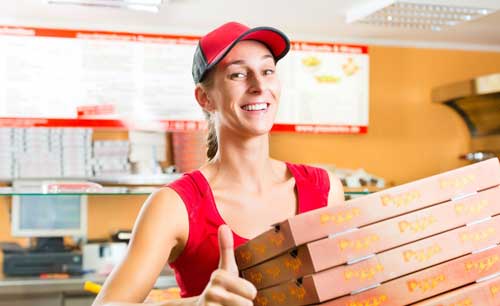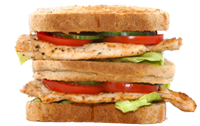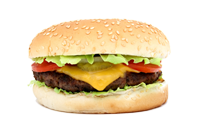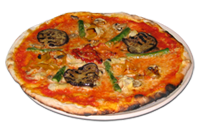 Today more than ever before the Quick Service Restaurant (QSR) industry is one constantly marked by massive change and constant innovation. The tools once used to answer the multi-billion dollar question, “Where will we eat today?” are constantly changing about as quickly as you can order a meal through your local drive-through. Today’s Quick Service Restaurant (QSR) clientele are looking more and more like fast-food rebels, challenging the established conventions of trusted and traditional advertising, promotions, and impulse buying and instead relying more so on online reviews (both by family/friends and even complete strangers) word of mouth and social media.
Today more than ever before the Quick Service Restaurant (QSR) industry is one constantly marked by massive change and constant innovation. The tools once used to answer the multi-billion dollar question, “Where will we eat today?” are constantly changing about as quickly as you can order a meal through your local drive-through. Today’s Quick Service Restaurant (QSR) clientele are looking more and more like fast-food rebels, challenging the established conventions of trusted and traditional advertising, promotions, and impulse buying and instead relying more so on online reviews (both by family/friends and even complete strangers) word of mouth and social media.
 Recent research has indicated that as many as 90 percent of online consumers will trust the recommendations from people they personally know.Surprisingly, it has also been found that as many as 70 percent will even go as far to trust the opinions of complete and total strangers. Recent studies have also found that a highly-rated product will increase the likelihood of purchasing for more than half of all consumers. According to one recent survey of Mums who use the Internet, personal consumer reviews are trusted almost twelve times more than descriptions that come from the actual companies advertisements themselves. The technology of today enables Quick Service Restaurant customers to make their decisions based on what others within their closely self-defined “network” select to share with them about a particular Quick Service Restaurant or a particular menu.
Recent research has indicated that as many as 90 percent of online consumers will trust the recommendations from people they personally know.Surprisingly, it has also been found that as many as 70 percent will even go as far to trust the opinions of complete and total strangers. Recent studies have also found that a highly-rated product will increase the likelihood of purchasing for more than half of all consumers. According to one recent survey of Mums who use the Internet, personal consumer reviews are trusted almost twelve times more than descriptions that come from the actual companies advertisements themselves. The technology of today enables Quick Service Restaurant customers to make their decisions based on what others within their closely self-defined “network” select to share with them about a particular Quick Service Restaurant or a particular menu.
 How consumers access information is also continually changing at a breakneck pace. Today’s Smart phones are now empowering consumers to very quickly research and make some informed decisions about where they will dine out.
How consumers access information is also continually changing at a breakneck pace. Today’s Smart phones are now empowering consumers to very quickly research and make some informed decisions about where they will dine out.
This gives a whole new meaning to the very popular term within the QSR industry of “buying on impulse.” The majority of consumers now access their Internet wirelessly. This ever changing dynamic in how Quick Service Restaurant customers gather their data and what they expect to experience when they go to a given QSR. This also means QSRs must utilise every scrap of modern technology available to them to stay competitive and in turn attract new customers and of course ultimately their money.
Many Quick Service Restaurants already have already begun to reach out to their customers using the very same methods and technology that their customers have been for all along using to find them. Subway and Burger King in the U.S have recently launched promotions using text-to-order or SMS technology. Rewards are then offered to customers that use texting/SMS to order a meal. Customers can place their custom made orders online or with their smart phone with some Quick Service Restaurants and then simply pick their order up. At the restaurant, a Dynamic Digital Menu displays a menu board which then tracks the most ordered burger or the most unique meals created. Individual customers can even broadcast their unique meal or burger creations via Facebook and Twitter should they chose to do so. Each time someone orders their unique creation, the customer can potentially receive a small credit towards their next order.
QSR restaurants now all offer all the modern amenities to keep their customers connected; free Wi-Fi and many-many power outlets to charge phones and their personal PC’s, iPads and Android Tablets Quick Service Restaurants are also reaching out to their own employees in several new and very innovative ways. Given the huge combination of mobile devices among young people who are the typical workers in the QSR industry and the high turnover rates, QSRs now have a huge incentive to deliver quality effective digital training to their employees. These examples above illustrate what once was just considered a simple “take away order” is now becoming an contemporary entertainment destination and promotional experience that is driving far greater customer interest, loyalty, and most of all, far greater spending.
The enabling force behind the bulk of these changes is technology in a sector where competition is fierce, turnover among staff is often high, and consumer tastes are often very erratic and often very unpredictable. Innovative restaurateurs are adapting employee retention and customer loyalty through innovative uses of networking and emerging applications and technologies. In fact, much of the future innovation in the Quick Service Restaurant business will be found in a store’s effective use of their own networks and the technologies that enable their business applications.
QSRs will always have to be concerned about the quality and the value of the meals they are serving. But the future of the QSR and its ability to survive and thrive amidst very strong competition and increasingly tough economic times is tied to its intelligent use and management of technology and how it directly impacts and influences the customer’s experience.
 These are a just a few examples technological advances that are seen as being standard in the new ever changing world of the evolving Quick Service Restaurant. There is also the use of Digital Menu Boards for the more efficient targeting of demographics. Soon almost all Menu boards will be digital and will automatically change displays and information based on the time of the day and the targeted demographic. A good example perhaps during the morning commute the Digital Menu Boards could highlight suggested commuter breakfast options. Then later in the morning a menu could be displayed that would shift to items of interest to stay at home parent, followed again by a mid afternoon menu that is more appealing to after-schoolers. Dynamic Digital Menu Boards will then anticipate traffic and optimise each selling opportunity and moment for improved margins on sales, value for money and customer service.
These are a just a few examples technological advances that are seen as being standard in the new ever changing world of the evolving Quick Service Restaurant. There is also the use of Digital Menu Boards for the more efficient targeting of demographics. Soon almost all Menu boards will be digital and will automatically change displays and information based on the time of the day and the targeted demographic. A good example perhaps during the morning commute the Digital Menu Boards could highlight suggested commuter breakfast options. Then later in the morning a menu could be displayed that would shift to items of interest to stay at home parent, followed again by a mid afternoon menu that is more appealing to after-schoolers. Dynamic Digital Menu Boards will then anticipate traffic and optimise each selling opportunity and moment for improved margins on sales, value for money and customer service.
Table-based ordering systems such as iPads and Android tablets in conjunction with table top payment transactions will soon be as common as self-service petrol stations. We could soon see every QSR table-top equipped with touch screen digital ordering devices such as an iPad or Android tablet. Customers will then have the ability order their food and complete credit card transactions all at the very same place they will eat their meal. Whilst the QSR operator saves money from a staffing perspective, customers are happier as orders will be potentially more accurate, cheaper and generally faster. Consumers can also learn about the specials of the day as soon as they arrive at their table, this saves enormous amounts of time educating staff each day about constant menu changes. We have all too often seen those vacant looks when asking wait staff about the daily specials only to see them excuse themselves to go and find out?
The QSR restaurant dining room table will eventually become a sort of multifunction information and entertainment center. Digital devices at each table could potentially provide information about product ingredients diet and the nutritional content. Currently there are many Australian QSR’s that have taken to printing this information on their packaging or their old fashioned scrolling menu boards. These devices will not only be a way for customers to learn more about the food they are eating but also be used to entertain them with games, contests, promotions and customer surveys. Most importantly of all click that like button on Facebook or that valuable Tweet of recommendation.
QSRs will soon be able to use the gathered information about their customer’s entertainment choices to learn more about their customers themselves and what they like to order at the various times of the day and how much or little they like the items on offer.
The customer experience will always depend heavily on well-trained and highly motivated employees. QSRs will need to meet the challenge of industries traditional high employee turnover with video training and other training systems delivered through in-store or other forms of digital media. Information will need to be delivered to employees in ways that are easy for the employee to retain. Many QSRs will also have digital training rooms where employees can learn skills via video and audio the latest on everything ranging from food preparation procedures, new store procedures, workplace health and safety, food safety, personnel management and the latest and upcoming promotions.
 Using intelligent drive-through technologies like Digital Menu Boards QSRs will soon be able to link customer’s mobile devices to their drive-through windows. By establishing such a link between the store and the customer’s mobile device, QSRs will have the ability communicate with customers about promotions and specials as they proceed through the drive through line. At the actual drive-through window a customer will simply swipe a loyalty card or scan a bar or QR codes from their phones allowing QSRs to track customers’ frequency, offer incentives and reward customer for their loyalty. QSRs will need and eventually turn to technology that can process orders over this new very fast and exciting method of delivery.
Using intelligent drive-through technologies like Digital Menu Boards QSRs will soon be able to link customer’s mobile devices to their drive-through windows. By establishing such a link between the store and the customer’s mobile device, QSRs will have the ability communicate with customers about promotions and specials as they proceed through the drive through line. At the actual drive-through window a customer will simply swipe a loyalty card or scan a bar or QR codes from their phones allowing QSRs to track customers’ frequency, offer incentives and reward customer for their loyalty. QSRs will need and eventually turn to technology that can process orders over this new very fast and exciting method of delivery.
Managing a restaurant inventory can at times be quite challenging. It is particularly challenging if restaurateurs are operating multiple stores and in multiple locations. The greater the distance often the greater the challenge with some QSR operators spread nationally. In the future there will be a greater use of transaction video to reduce shrinkage and monitor sales inconsistencies. Video monitoring for security could be based on sales activity. Video capture could potentially occur when there is a ‘no sale’ transaction at a point of sale or when certain specific inventory is being accessed. By making video capture based on certain activities, this will not only reduce shrinkage, but save valuable time for management and store employees that can be better spent on reaching out to their customers.
If you are having difficulties managing you inventory or you’re ordering then speak with Abcom about eProphet.NET Inventory and ordering solutions. Our stock solutions software has been in use by 1000’s of QSR Restaurants’ in Australia for over two decades.
Enquiries:
Call (07) 5530 7806 or contact us via our online form
International Phone: +61 7 5530 7806
Articles by QSR Media News Abcom

